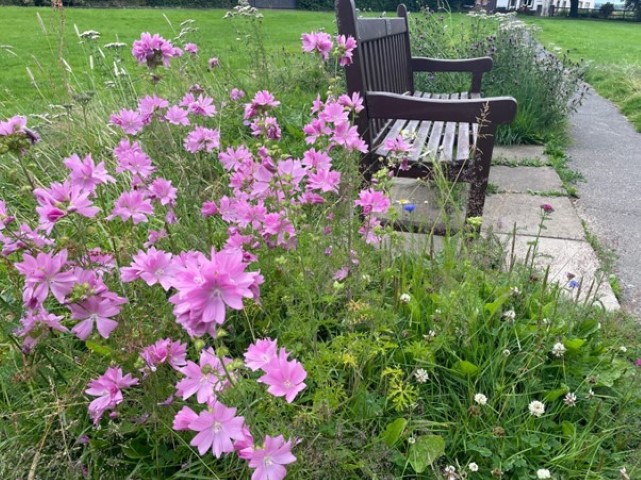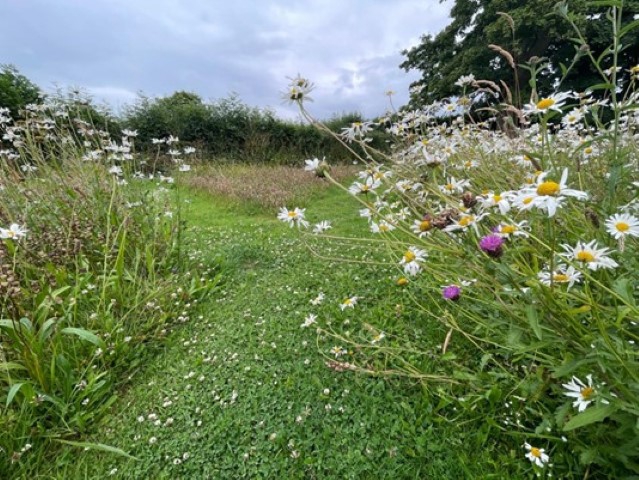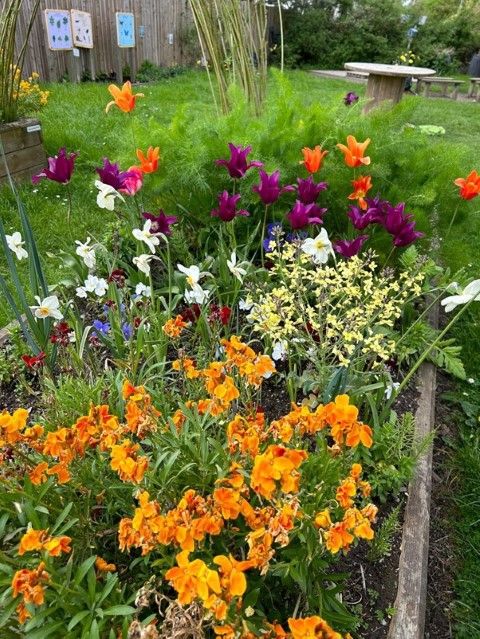With our call out for more groups to join our Climate and Nature Friendly Communities Network, we're delighted to share this blog from Jim Jeffrey, Pollinator Strategy & Biodiversity Strategy at NatureScot and Chair of the Garden for Life Forum, about the brilliant Scottish Borders group Green St Boswells and their pollinator journey.

At one time it was said that St Boswells had the largest village green in Scotland. Today the Borders village is earning a reputation for its big ideas; green ideas. That helps explain why they won first prize in the 2024 Keep Scotland Beautiful annual pollinator awards.
NatureScot is delighted to continue support for the Keep Scotland Beautiful It’s Your Neighbourhood Pollinator-friendly award. 2024 was our seventh year of doing so, and once again the standard of entries was extremely impressive.
As we grapple with the twin threats of climate change and biodiversity loss, it has never been more important that we work together to make space for nature. Our pollinators face many challenges, but our community groups have shown how we can help them with a range of positive actions from planting for pollinators to raising awareness of their importance. Looking after nature is good for us, and when we help our pollinators, we also make our greenspaces better places for everyone to enjoy.
For the impressive Green St Boswells community group this was a back-to-back success. Winners of the award in 2023, they demonstrate a clear vision of bringing nature into the heart of their village whilst helping tackle biodiversity loss.

They’ve been inspired by both national and local projects. This year the St Boswells team were motivated by Buglife’s 'B-lines' and the 'Pollinators Along the Tweed' project. These larger scale projects convinced the team to strive even further to increase areas supporting pollinators around their village.
Simple but effective steps such as reduced mowing regimes and planting for pollinators quickly helps nature and in particular pollinators. The icing on the cake comes with spreading the word and identifying new opportunities to maintain progress and momentum.
Green St Boswells are very much switched on when it comes to knowing what makes a positive impact for pollinators. They hardly miss an opening. In the centre of their village, they lobbied hard to convert hard landscaping into something more pollinator-friendly by installing planters containing perennial and annual plants.
They worked with their local council to persuade the shift from close-mown grass to areas converted to herbaceous perennials and a wildflower meadow, underplanted with spring bulbs. These meadow areas are a particularly welcome move, designed as they are to fill the resource gap for early pollinators.

Taking your community on the pollinator journey requires good communications skills. Around a popular bench on the village green, the group took the opportunity to explain exactly why they were developing a pollinator-friendly green space. They have also gathered yellow-rattle seeds, specifically for redistribution, and have been sharing this resource with other community groups.
Part of the Green St Boswell family is the local Community Woodland which sits to the south of the village. Visitors who take to the paths here will find a variety of trees, plants, and if in luck wildlife. A community spirit has grown up and a clutch of volunteers care for it, spend time in it, and learn skills in it.
The Woodland is owned by the Buccleuch Estate and is managed by the community in partnership with them. Ecological surveys using local expert assistance have been carried out to assess just what thrives in this community woodland. These events not only help define and promote the diverse nature on St Boswells doorstep but represent another wonderful opportunity to spread the word about how important our pollinators are.
Of course, you could say that such work is in vain if we don’t bring the next generation along. That’s why Green St Boswells lays great store in helping pupils and staff to get the most out of the St Boswells Primary School Garden. It’s a rewarding area of work, and has included practical actions such as monitoring pollinating insects to assessing the impact of targeted wildflower planting. Knowing that the actions taken make a real impact is vital to maintaining momentum.
St Boswells lies just south of Melrose in the Scottish Borders, and is only 10 minutes down the road from Abbotsford House, long associated with Sir Walter Scott. The supporters of Green St Boswells may not lay claim to the literary fame of Sir Walter, but they certainly have a good story to tell.

We're looking to grow our Climate and Nature Friendly Communities Network. Read more here if you're interested in finding out more about the resources and support we offer.


